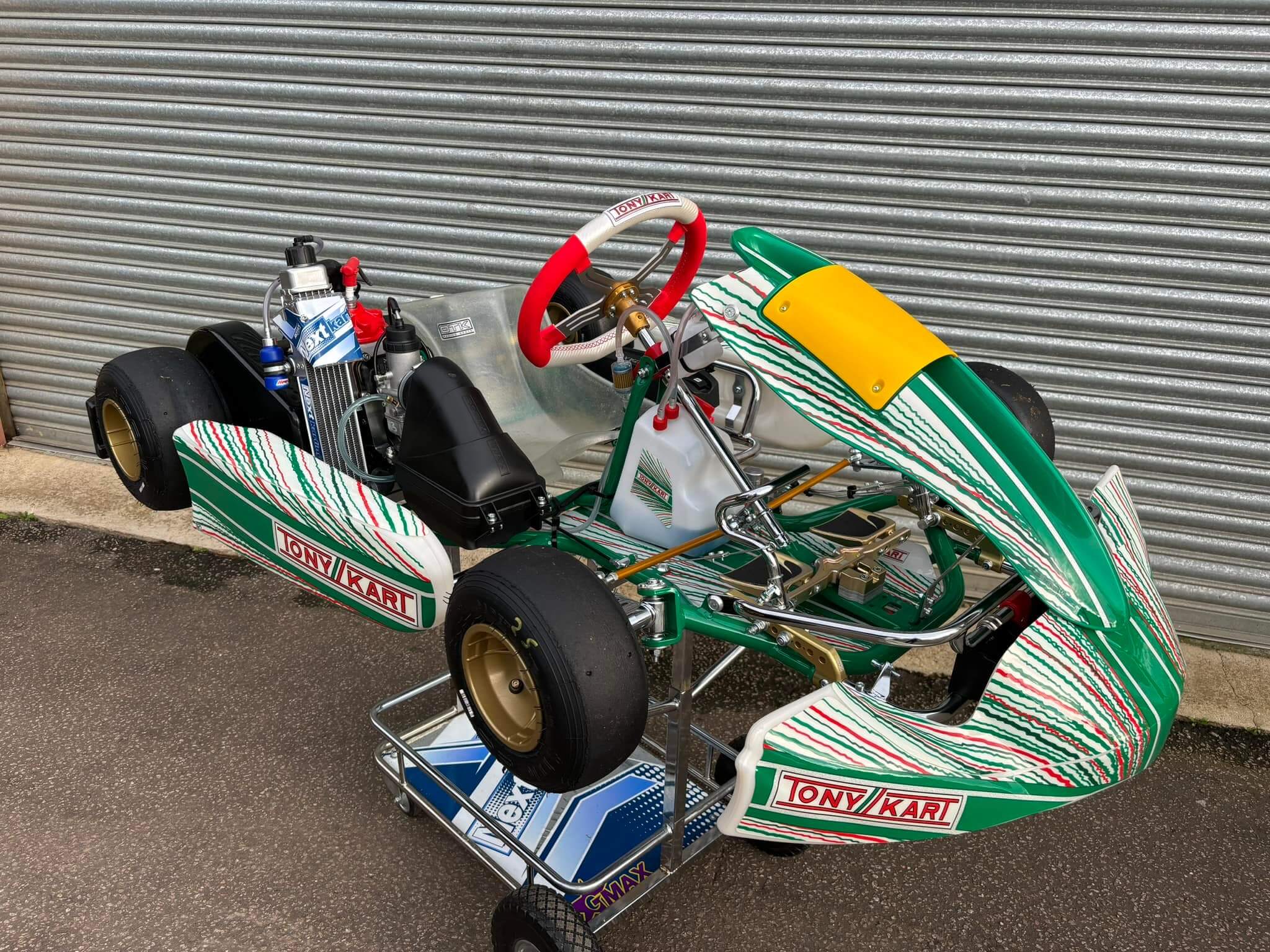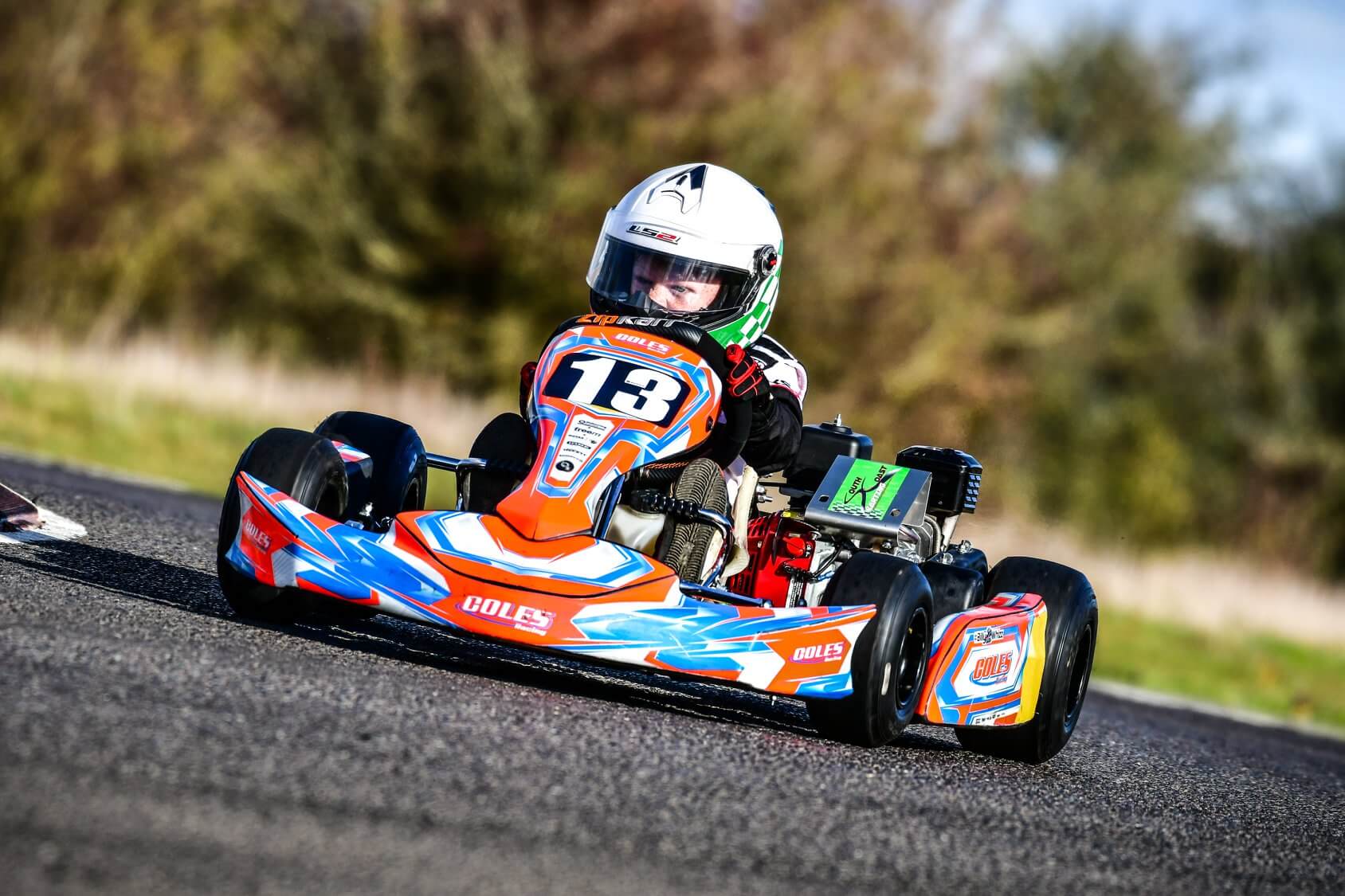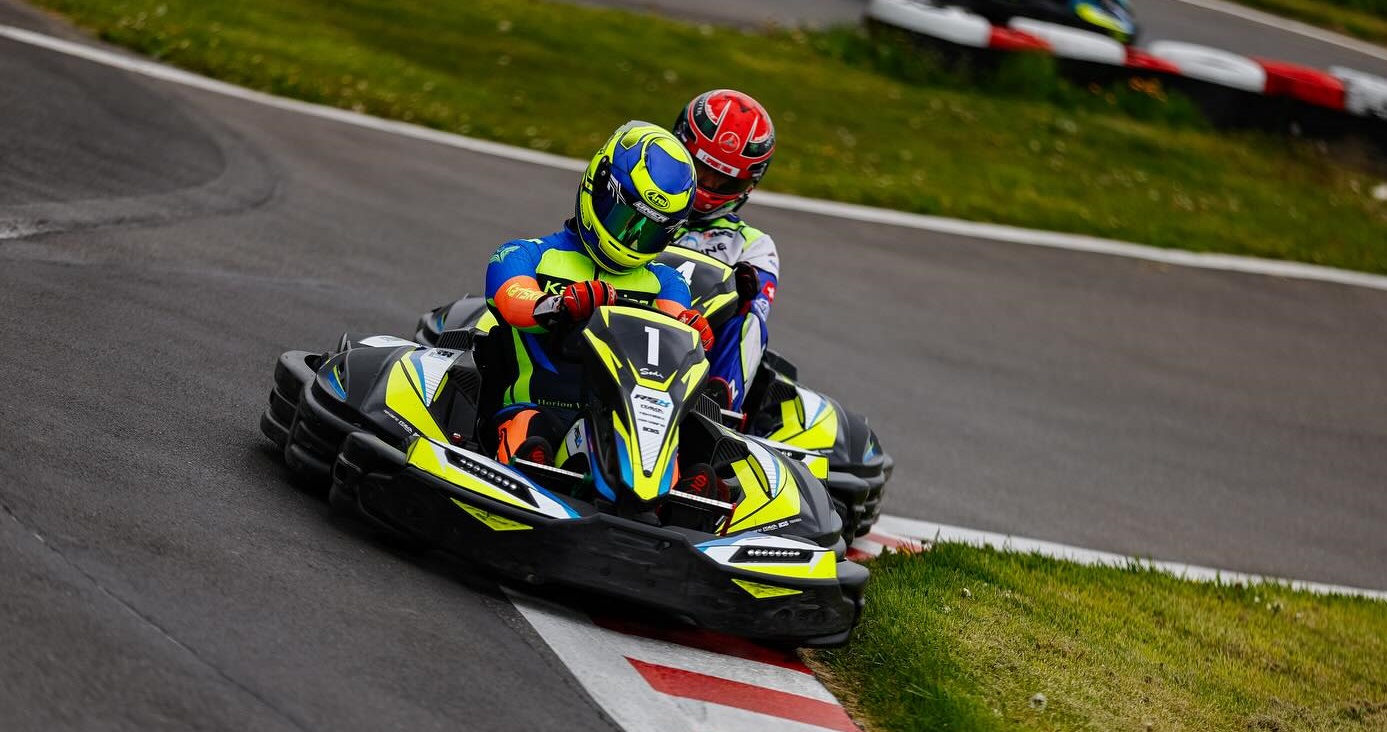Superkart: The world's fastest kart!
By RobinB on 06 May 2025 Karting100 horsepower, 250 km/h, minimum weight 218 kg with the driver, 0 to 100 km/h in under 3 seconds… The spec sheet is impressive, and it belongs to a Superkart 🔥
The Superkart is a hybrid format, combining the pure driving feel of karting with performance close to, or even beyond, that of a single-seater like a Formula 4 😎
Little known to the general public, Superkart is a fairly niche discipline but it stands out with its looks and above all its circuit performance. With its bodyworked chassis, high-strung two-stroke engine, and new, more accessible alternatives (750 cc single-cylinder two-stroke or four-stroke engines), it has established itself as a full-fledged category.
🏁 Origins of the Superkart: a kart like no other
Invented and popularized by the British in the 1970s, the Superkart category quickly took on an international dimension. The European Championship was born in 1978, followed by a World Championship in 1983.
In the late 1980s, the discipline reached a peak in popularity, followed by a gradual decline due to the end of production of the Rotax 256 engine, before a revival in 2002 with the arrival of new engines. At the time, it wasn’t uncommon to hit the regulatory cap of 60 participants on the grid 😲
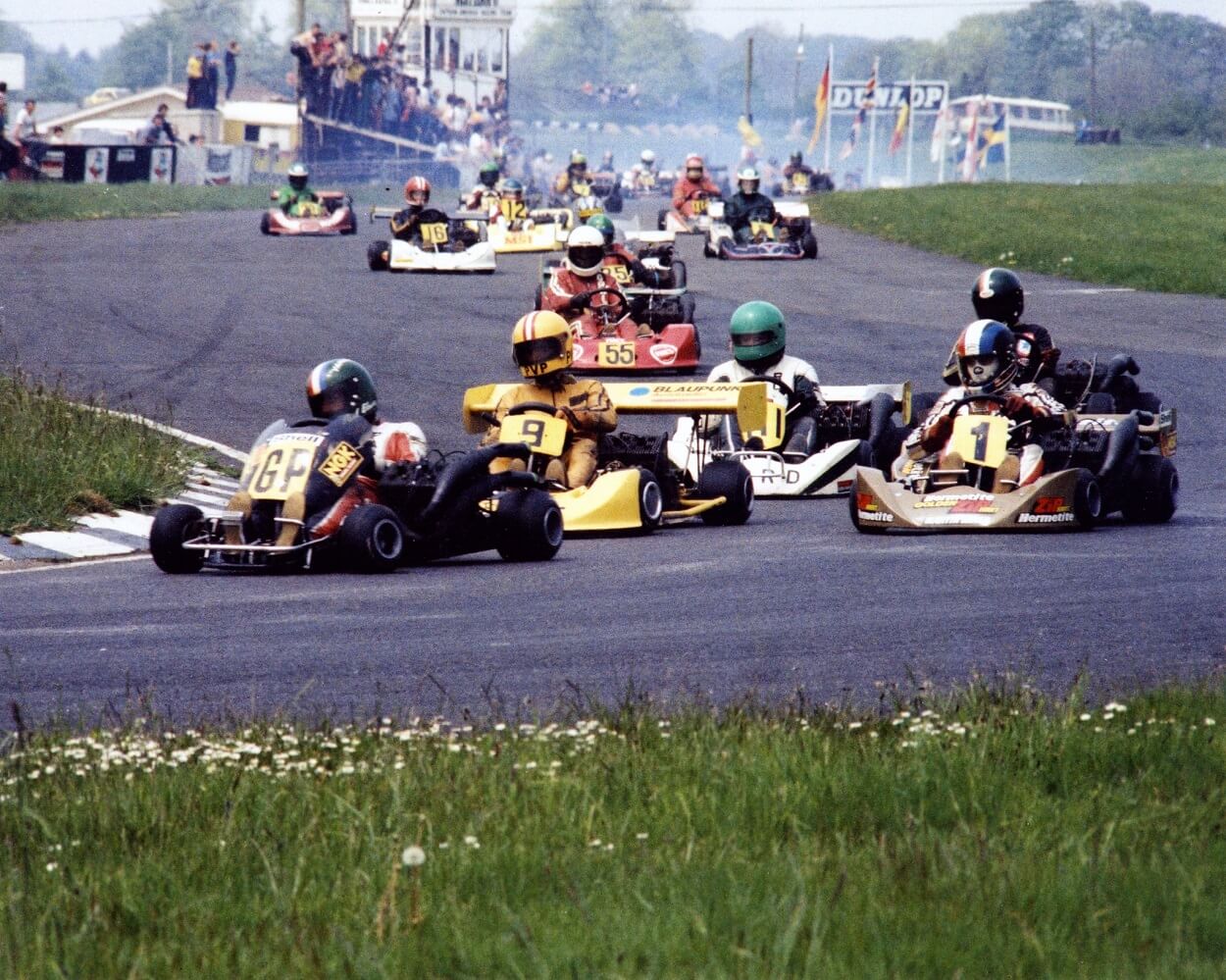
France quickly joined the movement. As early as 1982, a national championship was launched and won by Michel Trollé. A few years later, Éric Gassin made history by becoming the first world champion in 1987 and European champion in 1988 with a NISSAG chassis built with his family 💪
Today, Superkart attracts a passionate audience, often older than the average for traditional karting, and features a unique atmosphere—a blend of craftsmen, seasoned amateurs, and high-level technicians.
🔧 Superkart Technical Specifications
While it no longer really looks like a traditional kart, the Superkart retains its technical foundations… but pushed to the extreme. Starting with its insane power-to-weight ratio 😈
⚙️ Key Specifications:
- Engine: 250 cc twin-cylinder 2-stroke (Division 1), originally derived from a Moto GP engine
- Power: ~100 horsepower
- Total weight (kart + driver): 218 kg (Div.1), 208 kg (Div.2), 218 kg (Formule SK-FFSA)
- Top speed: up to 250 km/h
- 0 to 100 km/h: < 3 s
- Rev limit: up to 14,500 rpm
- Transmission: chain, 5- or 6-speed gearbox
- Chassis: tubular, bodyworked, aero-profiled
- Tires: 6-inch slicks
- Brakes: front/rear discs, no assistance
- Steering: rack and pinion
- Gear: leather suit mandatory (FFSA regulations)
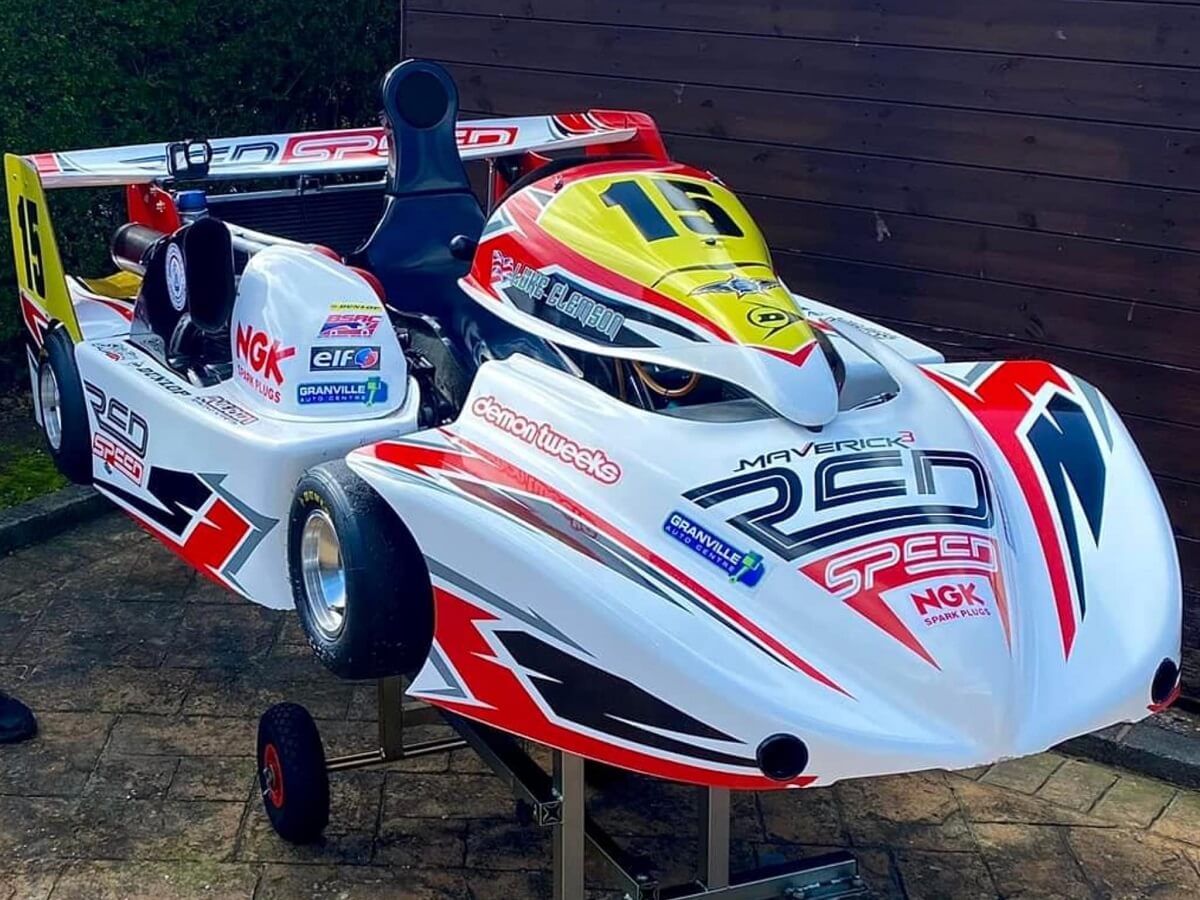
On track, a Superkart exceeds 230 km/h on fast layouts like Le Mans or Dijon, with average lap speeds over 170 to 180 km/h. And thanks to its featherweight, it brakes much later than any car: at Dijon, the record is 1:14.329, and some drivers brake just 60 meters before the corner (see video below). Performance levels on par with—or even beyond—many single-seaters. On the Bugatti circuit, the Superkart lap record was equivalent to the MotoGP pole time 😱
Also see : "Sodi World Series (SWS): The global competition dedicated to leisure karting"
Onboard Camera in a Superkart – Track Record at Dijon Prenois Circuit!
How much does a Superkart cost?
- New Superkart: around €23,000 excl. VAT, or €27,600 incl. VAT (chassis + engine package). A chassis alone with all options from ANDERSON costs around €10,500 excl. VAT, and a complete VM engine €12,500 excl. VAT.
- Used Superkart: €8,000 to €14,000 incl. VAT, depending on generation, condition, and track record.
➡️ See all karting listings on GoToTheGrid 😋
🆕 SK-FFSA Formula & 4-Stroke Engines: A More Accessible Alternative
For a long time, only 250cc twin-cylinder 2-stroke engines dominated Superkart. That’s still the case, but the SK-FFSA Formula offers a simpler and more affordable way in, with engines sourced from production motorcycles (single or twin-cylinder 4-strokes up to 1000 cc, or single-cylinder 2-strokes < 750 cc). Fewer adjustments, lower costs, but still a lot of fun and performance that’s less extreme—but plenty enough to enjoy yourself 👍
Also check out: "What is the budget required to drive a competitive kart ?"
🔎 The Categories: Division 1, Division 2 and SK-FFSA Formula
Here are the three main categories currently recognized by the FFSA:
🥇 Division 1
- Engine: 250 cc twin-cylinder 2-stroke
- CIK-FIA Homologated (DEA, VM, etc.)
- Minimum weight: 218 kg
- Top-tier equipment
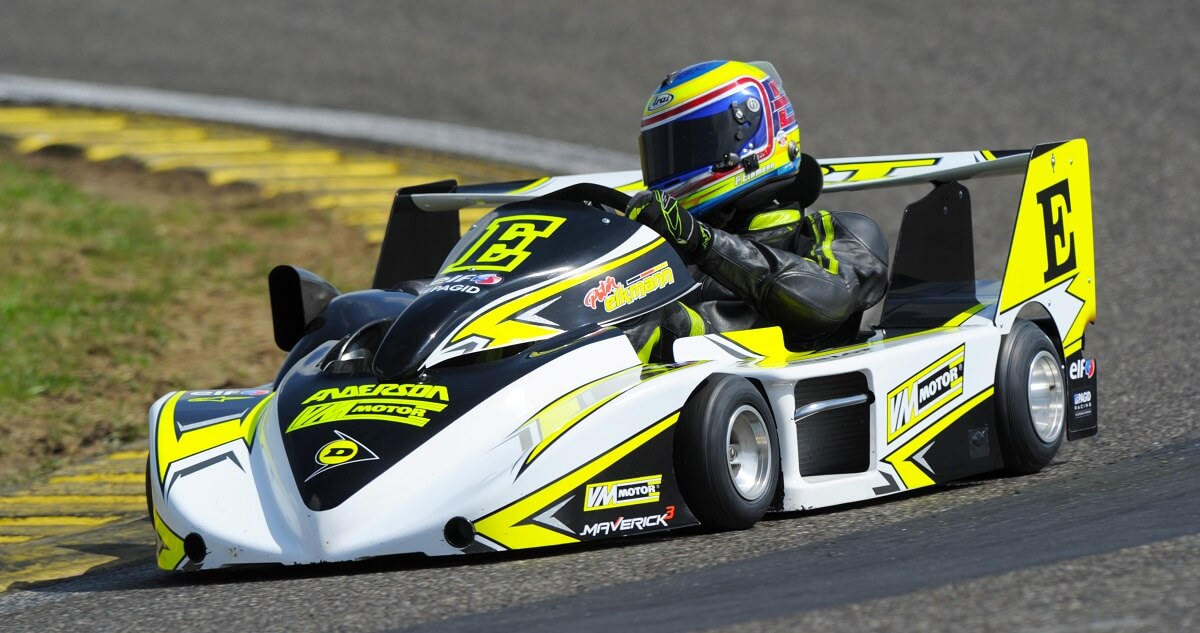
🥈 Division 2
- Engine: 250 cc single-cylinder 2-stroke (often motorcycle-based)
- Less power, but still very competitive
- Minimum weight: 208 kg
- Lower cost, a great starting or progression platform
🆕 SK-FFSA Formula
- Engine: 4-stroke twin-cylinder < 1000 cc or 2-stroke single-cylinder < 750 cc
- Equipment: from production motorcycles or custom-developed
- Minimum weight: 218 kg
- Ideal for starting out on a smaller budget
⚙️ Active Engine Builders
Division 1 (250 cc twin-cylinder 2-stroke)
Today, over 80% of the grid runs with VM Motor (Czech Republic) engines, which are the most common and widely used in the discipline. Some legacy engine builders like PVP Karting (Denmark) and DEA Engineering (Italy) are still active, but with limited presence. DEA no longer offers new engines, and competitors now rely on second-hand parts. PVP, while still operational, is less favored due to logistical issues (parts come from Denmark).
Other engine builders such as FPE (France), SGM (Italy), and BRC (Canada) were once major players but are no longer represented in Superkart racing today.
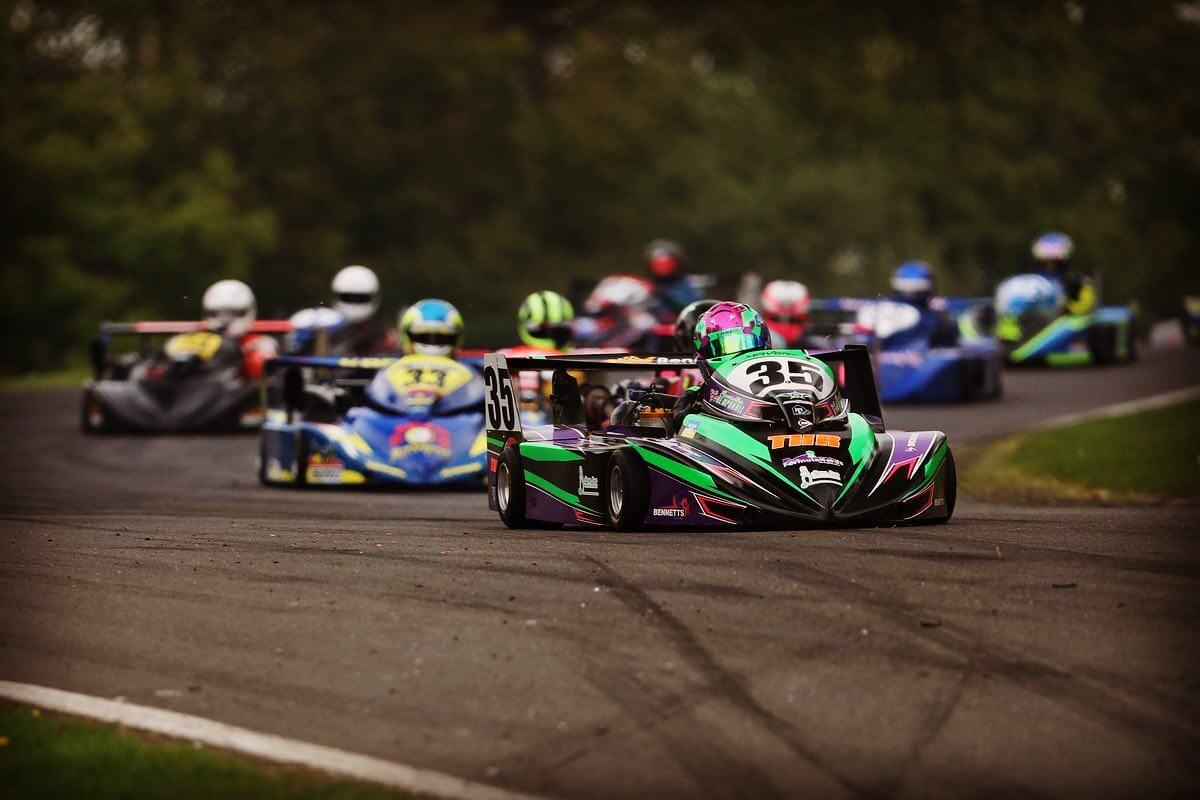
Division 2 (250 cc single-cylinder 2-stroke)
In Division 2, which uses 250 cc single-cylinder 2-stroke engines, several engine builders are active. Viper Racing (UK), THR (UK), and DEA, which remains the benchmark in terms of power and reliability (Italy). Though aging, the Rotax 257 (Austria) is still used in older chassis or for specific setups. Meanwhile, some drivers use adapted motocross engines, such as those from GasGas or KTM, although these are less common.
SK-FFSA Formula (4-strokes and prototypes)
- Production engines 450cc/1000cc – Honda CRF, KTM 450, Aprilia SXV 550, etc.
- Non-homologated prototypes allowed on an experimental basis (like the RUBIG-MRT)
- Goal: simplify access with lower maintenance, more autonomy (starter-equipped engines, reliability)
Chassis Manufacturers Currently Active
- Anderson (UK) – The absolute benchmark (Maverick 3)
- MS Kart (Czech Republic) – Once a reference but production ceased in 2023
- PVP (Denmark) – the only manufacturer offering a turnkey kart and engine combo ready to race
- Stockman (Australia) – Specialist in 250 single-cylinder
French Championship & Superkart Cup 2025
Superkart remains very active in France with two titles at stake:
- French Championship: reserved for Division 1
- French Cup: open to Division 2 and SK-FFSA Formula

📅 2025 FFSA Superkart Calendar:
- May 2-4 – Albi (supporting TTE)
- May 29-31 – Magny-Cours (BGDC event)
- June 27-28 – Anneau du Rhin (Caterham series)
- September 12-14 – Anneau du Rhin (2nd Caterham round)
- October 3-5 – Le Vigeant (FFSA French Cup event)
Each event includes private testing sessions before the competition to learn the track and fine-tune the setup. The race format includes one timed qualifying session and 3 races of 19 min + 1 lap.
Only Division 1 karts compliant with CIK-FIA homologation are eligible for the French Champion title 🏆
Drivers outside Division 1 are only classified in the French Cup.
FFSA entry fees: €550 per event.
And in Europe? No more FIA Championship… but a vibrant scene
There is no longer an official World Superkart Championship. The last world title dates back several years. The CIK-FIA European Championship was officially discontinued in 2020 due to COVID. The last edition was held in 2019 at Le Mans, with Peter Elkmann (Anderson/VM) taking his fourth title.

Since then, European drivers gather at international races integrated into the French or Dutch calendar, such as the French GP (Magny-Cours) taking place from May 29 to 31, 2025, or the Assen GP in the Netherlands (August 8-10, 2025), which attracts 60 competitors from around the world to the grid, with 100,000 passionate spectators attending this motorsport weekend 🥳
In Europe, other championships exist. One of the most notable is organized by the BSRC (British Superkart Racing Club) in the UK.
🧑✈️ Who Can Race in Superkart?
Contrary to what its performance might suggest, Superkart is not reserved for a professional elite—in fact, all drivers are amateurs. It does require a certain level of commitment, but it is open to any motivated enthusiast, as long as they meet a few conditions.
✅ Requirements to Participate
- Minimum age: 18 years old
- FFSA competition license: mandatory, with a valid medical certificate
- Driver gear: homologated leather suit, FIA full-face helmet, gloves, ankle-covering shoes
- Compliant equipment: whether 2-stroke, 4-stroke, or approved prototype, the kart must meet the specifications of the chosen category (Div.1, Div.2, or SK-FFSA Formula)
🚀 Do you need prior karting or motorsport experience?
No, no specific experience is required, though it’s obviously recommended. Drivers often come from KZ karting, car racing, or disciplines like motorcycle racing, single-seaters, Fun Cup, or hillclimb.
Superkart is physically and technically demanding, but it can be a great training ground or logical next step for those seeking more speed, more sensation, and fewer logistics than traditional motorsport. It also allows you to drive on top circuits with by far the best price/performance ratio in motorsport 😋
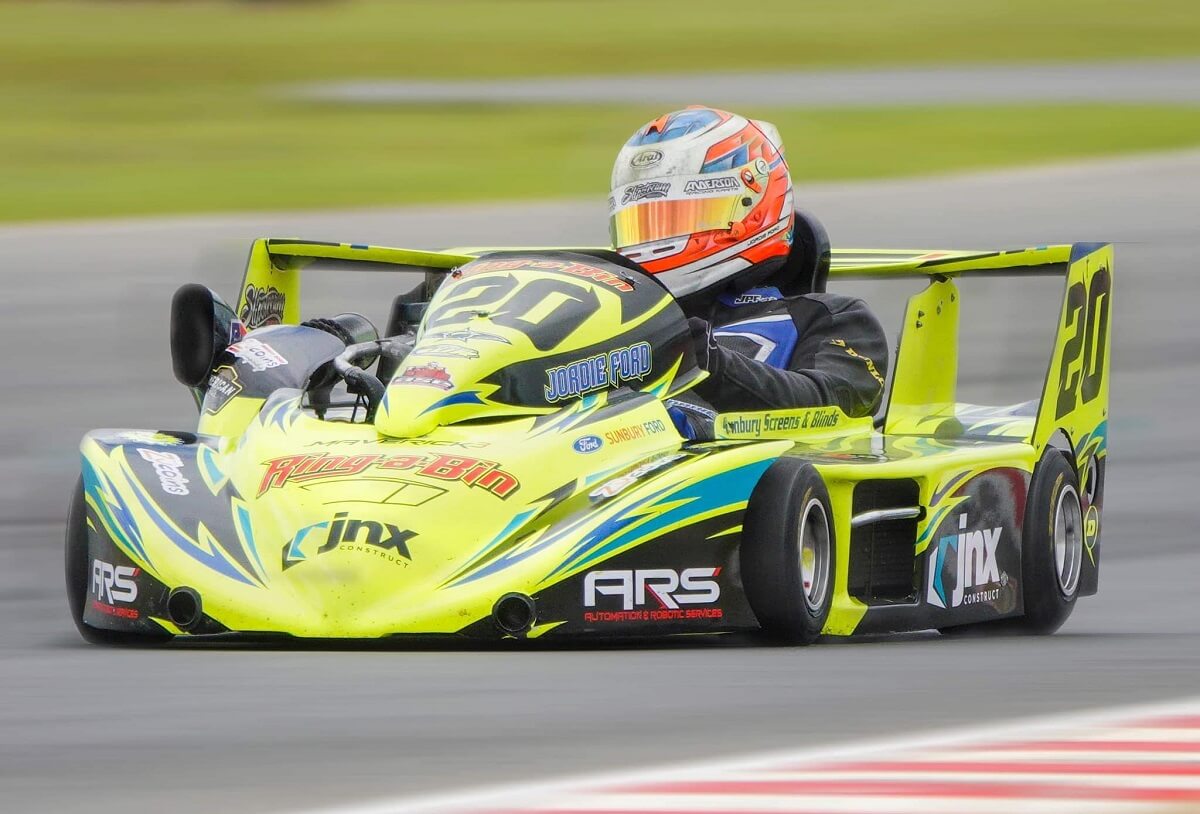
Extreme Thrills, Controlled Budget: Superkart Ticks All the Boxes
Drivers who’ve tried it speak for themselves. David COULTHARD, F1 driver: “It’s the most incredible machine I’ve ever driven.”
With roughly 100 hp for 218 kg all-in (kart + driver), the Superkart achieves acceleration comparable to Formula 3 single-seaters. It reaches over 230 and even 250 km/h depending on the track, with average lap speeds above 180 km/h.
Braking is brutal, downforce is significant, and precision driving is essential. It’s neither a standard kart nor a race car: it’s a category of its own.
Stéphane Daoudi, international GT driver, tested the Superkart at Dijon. His result? He finished 2nd… and said: “It’s not a car, it’s not a kart. It’s very physical, very sharp… and pure adrenaline! Superkart offers an insane sensation-to-cost ratio” 💥
💶 A Reasonable Budget for Such an Extreme Discipline
Even though the initial investment is significant, it’s still far below that of a single-seater or competition GT. And with the arrival of single-cylinder 750 cc 2-strokes or 4-strokes, maintenance costs are becoming more manageable.
Moreover, Superkart races on car circuits with real run-offs and proper on-site safety teams, making it paradoxically safer than traditional sprint karting on narrow tracks 😅
Conclusion: Superkart – Pure Adrenaline!
Superkart is a unique discipline, between long-circuit karting and motorsport. Demanding, ultra high-performance, but more accessible than it seems, it’s well worth discovering.
And with the SK-FFSA Formula, opportunities are expanding for enthusiasts looking to get started on a budget.
So… ready to give it a go? 😉
ℹ️ Huge thanks to Éric SEVERE, Superkart event coordinator and head of the FFSA Technical Department, for his valuable help with this article. Don’t hesitate to contact him if you have any questions or want to learn more about Superkart.
Éric SEVERE
+33 (0)6 75 42 68 98
superkart250@free.fr
Website: www.mediasuperkart.com



